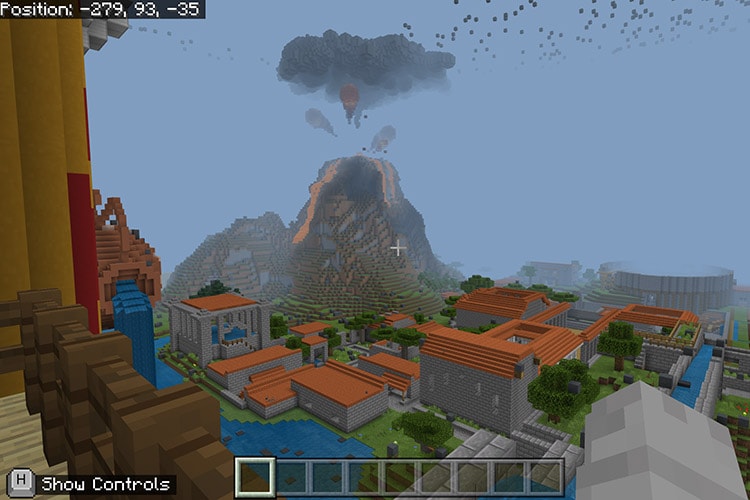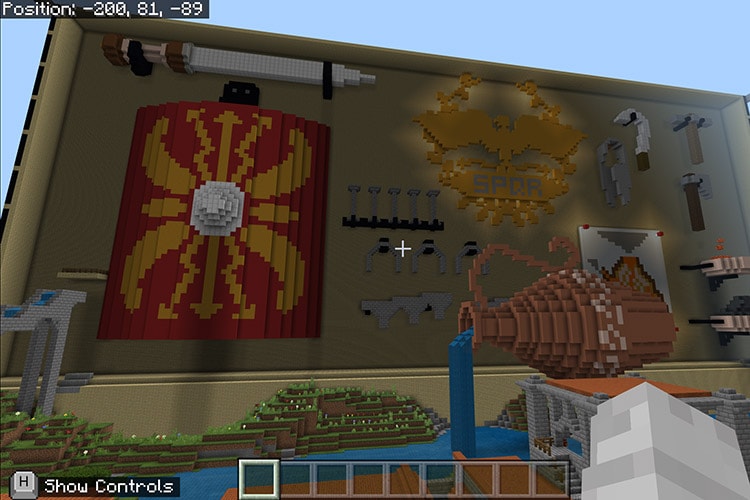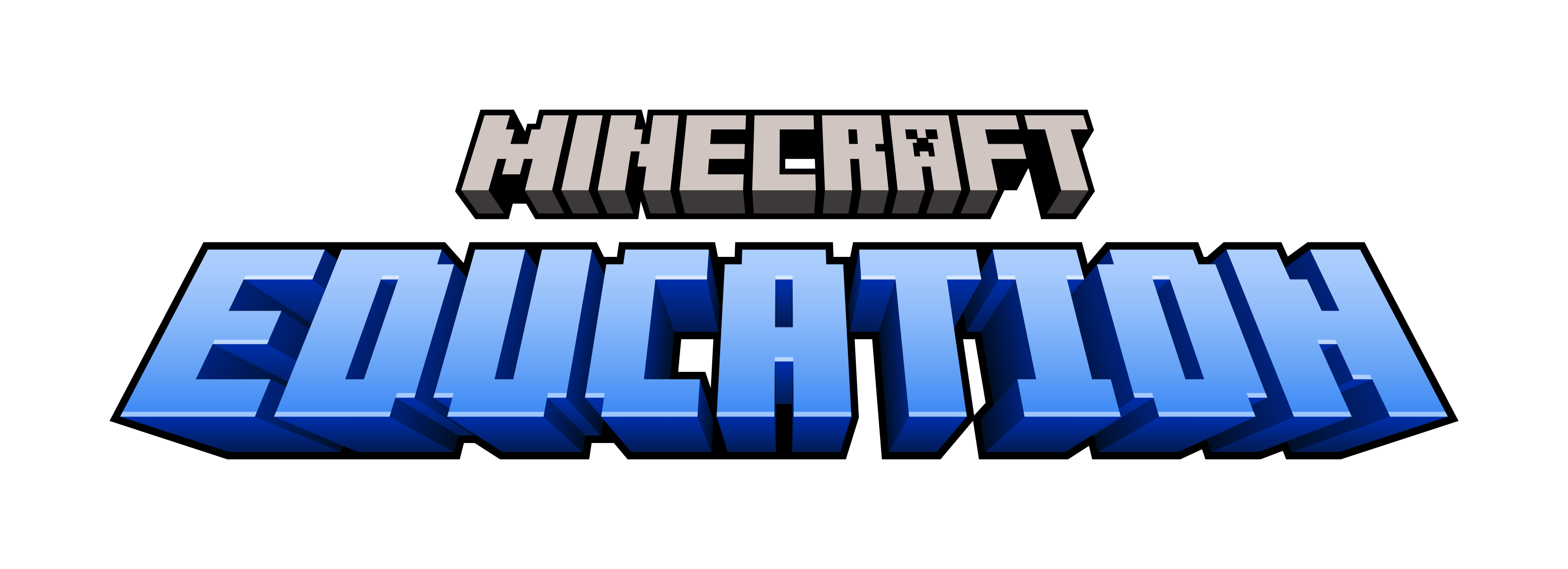Five New Lessons on Volcanoes from Minecraft: Education Edition
02 Jul 2021

The devastation wrought by Mt. Vesuvius on the ancient city of Pompeii is legendary. But what really happened, and why? If you could go back in time, could you change the outcome of this historical moment? Find out how by taking your learners on a journey into five new lessons in the Pompeii Toybox world from our partners at Phygital Labs. Now featured in our Minecraft: Education Edition Library.
In each lesson, students will use the science cycle to explore the impact of volcanic eruptions on local ecosystems by experiencing a model of the eruption of Mt Vesuvius in Minecraft, and by researching other volcanic eruptions from around the world.
Exploring the Impact of Volcanoes on our Ecosystems.
Students will design, analyze, and present a solution to keep people safe from the effects of volcanic eruptions without negatively impacting the ecosystem. They will also have an opportunity to build, test, and refine their systems for best results and least negative impact. The Pompeii Toybox world is available in the Minecraft: Education Edition Library, structured as five lessons that take roughly an hour to complete.

Lesson 1: Destruction! In this toybox you can observe the city of Pompeii, its beauty - and its destruction. Students observe the simulated eruption of Mr. Vesuvius and take notes on the Natural occurrences (Cause) and the Impact on environment (Effect).
Lesson 2: Exploring Volcanic Events! After witnessing the Mt. Vesuvius explosion and the devastating impact on its environment and people, students will find NPC Pliny the Younger, who asks, “What are the effects of a volcanic eruption on an environment? Let's read some examples from around the world and confirm the facts surrounding this particular volcano.” Students are prompted to learn about 4 volcanoes – Mt. Vesuvius, Mt. St. Helens, Eldfell, and Mauna Loa links are provided in-world to explore.
Lesson 3: Make a plan and apply for a building permit! Give students time to research and design a system that would keep the people living in close proximity to an active volcano safe from the effects of an eruption. Students will research methods and models, draw or sketch their own system, and apply for a permit! Students can work individually or in small groups for this project.

Designing (and testing) a System to Stop Lava in its Tracks
Lesson 4: Reset the Pompeii Toybox world to its pre-eruption state and invite students to begin building their system – will it work? Test it against the eruption by running the same code as in lesson 1. As part of the science cycle, students will make observations, gather evidence of success, analyze their system, and refine it as needed. Students will rebuild and refine their system as they identify limitations of it in action. Progress!
Lesson 5: Here’s where we document our work! Using the in-game Camera and Portfolio, learners take pictures of their build, or use a screenshot or screencast built into their operating system, to present their work. Encourage students to be creative in their photography and capture multiple angles and parts of their system and the story of its design. Student presentations will answer the essential question for the unit: How can people positively impact an environment to protect themselves from the potential dangers of a volcanic eruption? Student presentations should also outline their thinking during all parts of the science cycle.
So jump into our time machine and get curious! Understanding the environmental impact of volcanic activity through the ages with these exciting new lessons can empower young learners everywhere with greater sustainability practices in our modern-day world. Designed for ages 8+.


